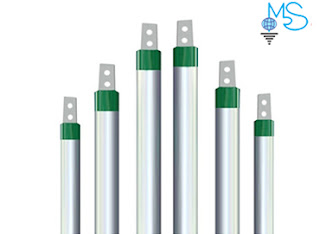Chemical Pipe Earthing Electrode: Ensuring Effective Grounding for Electrical Systems

Introduction In today's environment, where electrical systems serve as the backbone of our contemporary infrastructure, correct grounding is critical. The chemical pipe earthing electrode is a critical component of an effective grounding system. We will go into the realm of chemical pipe earthing electrodes in this detailed tutorial, exploring their significance, and benefits. Let us begin on this illuminating trip to obtain a better knowledge of this critical component. What is a Chemical Pipe Earthing Electrode? A chemical pipe earthing electrode is a grounding device used to establish a connection between an electrical system and the earth. It is made up of a pipe made of copper or galvanized steel that is filled with a conductive concoction of chemical substances. The electrical current can safely dissipate into the earth because the pipe is buried a long way beneath the surface. In order to ensure effective grounding, the chemical compound inside the pipe improves condu...
